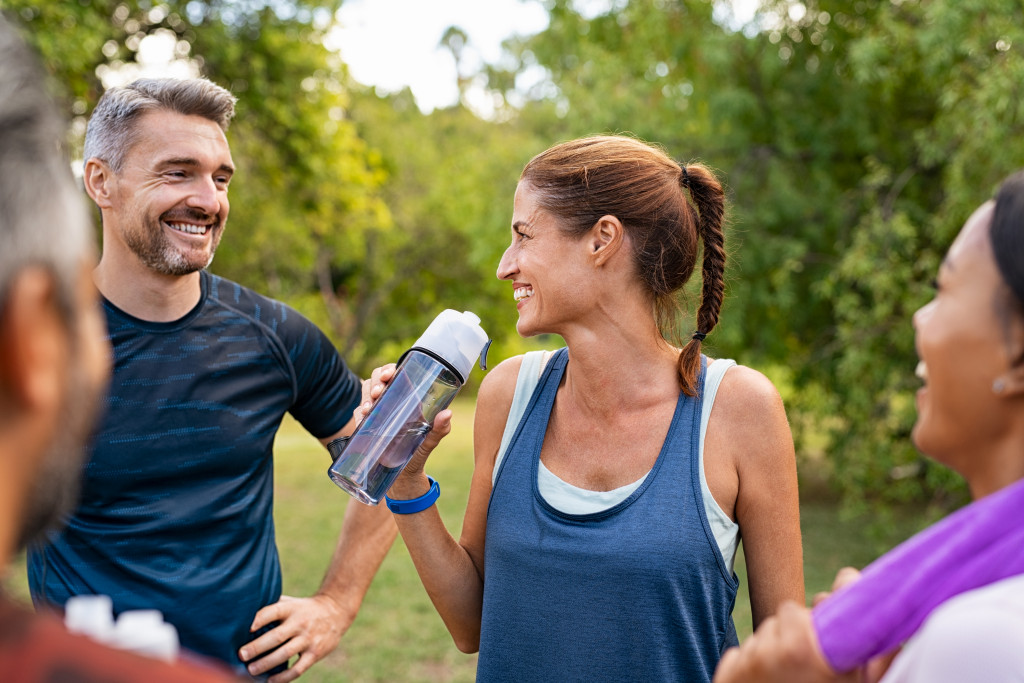- Hiking provides physical exercise and mental relaxation but carries the risk of injuries such as sprains and strains.
- Blisters are another common injury that can be prevented by wearing comfortable shoes and moisture-wicking socks.
- Sunburn can occur when exposed to direct sunlight for long periods, so protecting the skin is important.
- Staying hydrated is key to avoiding dehydration, and bring a water treatment kit in case you run out of water.
Feeling the warmth of sunshine on your face, hearing the gentle breeze rustling through branches above you, and letting the coarse soil beneath your feet take away tension. These sensations are delightful to behold during a hike. They also bring about immense health benefits! Hiking provides physical exercise and mental relaxation when one spends time in nature’s embrace.
However, like any physical activity, hiking comes with its risk of injury. From slips and falls to twisted ankles, hikers can suffer from a wide range of injuries that can put a damper on their outdoor adventures. Knowing what injuries to watch out for can help you prepare and stay safe while enjoying your next hike. This blog post will look closer at common hiking injuries and how to prevent them.
alt=”Mature man sitting on a couch with his sprained ankle on the table.” data-media-id=”26034″ />
Sprains and Strains
Sprains and strains are among the most common injuries hikers can experience. A sprain happens when the ligaments that connect bones are stretched or torn. Strains happen when a muscle or tendon is stretched or torn. These injuries occur when hikers step on uneven terrain or slip on wet rocks or leaves.
Proper Hiking Boots
To prevent sprains and strains, it’s essential to wear proper hiking boots with good ankle support and take your time on hikes and be aware of your surroundings. If a hiker experiences pain in their joints or muscles, it’s essential to stop and rest. Ice packs, bandages, and over-the-counter medications can help reduce the swelling and inflammation associated with sprains and strains.
Medical Attention
It may also be necessary to seek medical attention if the injury is severe or does not improve after resting and applying home treatments. A doctor may prescribe physical therapy or other treatments to help alleviate pain and speed up healing. To speed up recovery from this injury, you can use a reliable hyperbaric chamber treatment. A study showed that complete recovery from the injury is possible if you use the process within 36 hours after you incur the injury.
Blisters
Blisters occur when there is excessive rubbing on the skin. They can form on any part of the foot, which can be especially painful when hiking. Wearing improper foot gear or socks can cause blisters, as can hiking for too long without taking rests.
Comfortable Shoes
Wear comfortable shoes with good arch and ankle support and moisture-wicking socks to keep your feet dry and comfortable. If you do get blisters, it is vital to treat them properly. Keep the area clean and dry, and use a topical antibiotic cream if needed.
Cover the Blister
Cover the blister with a bandage, but make sure to not apply too much pressure. If possible, keep the blister intact, as this will help it heal faster. If it damages or bursts, clean it with soap and water and apply a sterile bandage. Consult a medical professional if you have any questions about managing your blisters.
Sunburn
Spending extended periods on a hike in direct sunlight can lead to sunburn, especially with long-lasting exposure without proper sun protection. Sun damage can be dangerous for the skin and the body.
Sunscreen
Protect yourself by wearing protective clothing, using sunscreen, and taking shade and rest stops as needed during your hike. Before you spend your day in the sun, slather on a broad-spectrum sunscreen that protects you from UVA and UVB rays. Make sure it has an SPF of at least 15 or above, and remember to evenly apply it over any exposed skin – even hard-to-reach areas. Remember that sunscreen is only effective if used alongside other protective measures – keep them in mind when venturing outdoors!

Dehydration
When out on a hike, staying hydrated is essential. Dehydration can cause dizziness, confusion, exhaustion, and other symptoms, putting you at risk for more significant injuries. Be sure to drink plenty of water before, during, and after your hike.
Water Treatment Kit
Also, bring a water treatment kit if you run out of water. This kit can purify water from a stream or lake to be safe to drink. Additionally, avoid drinks with caffeine and/or alcohol, as they can cause you to lose more fluids than you take in.
Hiking can be a great way to stay active and enjoy the outdoors. However, being aware of the risks and taking precautions to prevent injuries is essential. Understanding common hiking injuries, being equipped with the proper gear, and taking steps to stay safe can help you to avoid these types of injuries and ensure that your next hike is enjoyable and memorable!


